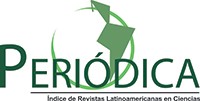The impact of environmental education on the sea turtle conservation in Mazatlán, Sinaloa, Mexico.
DOI:
https://doi.org/10.24039/rtb20232111531Keywords:
conservation, environmental education, sea turtles, tourismAbstract
The dynamics of a new segment of tourist activity bases its action on creating a link between the subject, the experience and the environment, these are the most important conditions for the tourist to choose the destination to visit. Environmental education within ecotourism is a strategic tool to promote respect for wildlife. The objective of this work was to develop an analysis of the impact of environmental education on the conservation of sea turtles in Mazatlán, Sinaloa, Mexico throughout three decades of recorded biological data in order to promote sustainable tourism with more socially solid attitudes. In Mazatlán Sinaloa, every year, during the sea turtle nesting season (July-October), numerous ecotourist subjects are interested in these endangered reptiles, in order to help protect and conserve these animals. There are regional and federal government public institutions that have a role in environmental education and wildlife conservation. This work involves the approach of animals on a coastal zone on the beaches with tourist dynamics with anthropocentric predominance with the aim of educating various social actors, where the natural resources that are the object of this investigation are sea turtles called olive ridleys Lepidochelys olivacea (Eschscholtz, 1829). The Mazatlán Aquarium with its sea turtle conservation program has managed to protect 15,103 nests; 1,393,194 eggs; 1,103,006 turtles released; 70.2% survival and 290,188 deaths due to natural disasters and other causes. Tourism supported by environmental education promotes an influence on residents and tourists for the care of the natural heritage of natural resources such as marine turtles. This research is a multidisciplinary analysis of the educational, biological, and sociocultural sciences based on a documentary review with in-depth interviews with key actors. There is a conceptual interpretation where social actors learn about biology, conservation, threats, and respect for wild animal life during their visit to the Sinaloan port.
Downloads
References
Acuario Mazatlán (2020). Día mundial de la vida silvestre. Revista de divulgación, edición especial.
Allen, M.S. (2007). Three millennia of human and sea turtle interactions in remote Oceania. Coral Reefs, 26, 959–970.
Alvarado-Díaz, J., Delgado-Trejo, C., & Suazo-Ortuño, I. (2001). Evaluation of black turtle project in Michoacan, México. Marine Turtle Newsletter, 92, 4–7.
Arzola-González, J.F. (2007). Humedad y temperatura en nidos naturales y artificiales de tortuga golfina Lepidochelys olivacea. Revista de Biología Marina y Oceanografía, 42, 377-383.
Böhm, M., Collen, B., Baillie, J., Bowles, P., & Iverson, J.B. (2013). The conservation status of the world reptiles. Biological Conservation, 157, 372-385.
Bourlon, F. (2020). Destinos turísticos de naturaleza en un contexto de crisis sanitaria global. Perspectivas de actores, oportunidades y desafíos, el caso de la región de Aysén, Chile. Gestión Turística. 33, 63-93.
Contreras-Salazar, P.A. (2008). Las Tortugas Marinas y Nuestro Tiempo. Acta Universitaria, 18, 32-35.
Eckert, K.L., Bjorndal, K.A., Abreu-Grobois, F.A., & Donnelly, M. (2000). Técnicas de Investigación y Manejo para la conservación de las Tortugas Marinas. Grupo Especialista En Tortugas Marinas. UICN/CSE Publicación No. 4.
Esterberg, K. (2002). Qualitative methods in social research. McGraw Hill.
Fish, M.R., Cote, I.M., Horrocks, J.A., Mulligan, B., Watkinson, A.R., & Jones, A.P. (2008). Construction setback regulations and sea-level rise: mitigating sea turtle nesting beach loss. Ocean & Coastal Management, 51, 330-341.
Fujisaki, I., & Lamont, M.M. (2016). The effects of large beach debris on nesting sea turtles. Journal of Experimental Marine Biology and Ecology, 482, 33-37.
Guzmán, V., & Garcia, P. (2016). Informe Técnico 2015 del programa de Conservación de Tortugas Marinas en Laguna de Términos, Campeche, México. APFFLT/RPCyGM/CONANP.
Hays, G.C., Ashworth, J.S., Barnsley, M.J., Broderick, A.C., Emery, D.R., Godley, B.J., Henwood, A., & Jones, E.L. (2001). The importance of sand albedo for the thermal conditions on sea turtle nesting beaches. Oikos, 93, 87-94.
Hernández-Sampieri, R., Fernández-Collado, C., & Baptista-Lucio, P. (2014). Metodología de la Investigación. Editorial McGraw Hill.
Hunt, C.A., & Vargas, E. (2018). Turtles, Ticos, and tourists: protected areas and marine turtle conservation in Costa Rica. Journal of Park and Recreation Administration, 36, 101-114.
Jiménez-Orocio, O., Espejel I., & Martínez, M. L. (2015). La investigación científica sobre dunas costeras de México: origen, evolución y retos. Revista Mexicana de Biodiversidad, 86, 486-507.
Landry, M.S., & Taggart, C.T. (2010). “Turtle watching” conservation guidelines: green turtle (Chelonia mydas) tourism in nearshore coastal environments. Biodiversity and Conservation, 19, 305.
Lapadat, J.C. (2009). Writing our way into shared understanding: collaborative autobiographical writing in the qualitative methods class. Qualitative Inquiry, 15, 955-979.
López-Castro, M.C., Carmona, R., & Nichols, W.J. (2004). Nesting characteristics of the olive ridley turtle (Lepidochelys olivacea) in Cabo Pulmo, southern Baja California. Marine Biology 145, 811–820.
Mazaris, A.D., Matsinos, G., & Pantis, J.D. (2009). Evaluating the impacts of coastal squeeze on sea turtle nesting. Ocean & Coastal Management, 52, 139-145.
Mendes, S., Martins, J., Mouga, T., & Coetzee, W. (2019). Ecotourism based on the observation of sea turtles–a sustainable solution for the touristic promotion of São Tomé and Príncipe. Cogent Social Sciences, 5, 1696001.
Read, T. C., Petit, M., Magnan, M., & Farman, R. (2019). Turtle watching-combining conservation and tourism: a case study in New Caledonia. Marine Turtle Newsletter, 156, 13-15.
Senko, J., Schneller, A.J., Solis, J., Ollervides, F., & Nichols, W.J. (2011). People helping turtles, turtles helping people: Understanding resident attitudes towards sea turtle conservation and opportunities for enhanced community participation in Bahia Magdalena, Mexico. Ocean and Coastal Management, 54, 148-157.
Silva, I.S.S., Arantes, M.O., Hackradt, C.W., & Schiavetti, A. (2020). Environmental and anthropogenic factors affecting nesting site selection by sea turtles. Marine Environmental Research, 162, 105090.
Taube, K. (2004). El pasado legendario. Mitos aztecas y mayas. Ed. Akal, Mexico. 150 pp.
Triessnig, P., Roetzer, A., & Stachowitsch, M. (2012). Beach condition and marine debris: new hurdles for sea turtle hatchling survival. Chelonian conservation and biology, 11, 68-77.
Vargas del Río, D., & Brenner, L. (2013). Ecoturismo comunitario y conservación ambiental: la experiencia de La Ventanilla, Oaxaca, México. Estudios sociales, 21, 31-63.
Virgen, C. (2018). Los objetivos del desarrollo sustentable desde la perspectiva de los habitantes de Puerto Vallarta. En S. Arnaiz & Gómez, A. (eds.), El turismo frente a los objetivos del desarrollo sustentable (pp. 81-110). Universidad de Guadalajara.
Wilson, C., & Tisdell, C. (2001). Sea turtles as a non-consumptive tourism resource especially in Australia. Tourism management, 22, 279-288.
Wilson, C., & Tisdell, C. (2003). Conservation and economic benefits of wildlife-based marine tourism: sea turtles and whales as case studies. Human Dimensions of Wildlife, 8, 49-58.
Wilson, E.G., Miller, K.L., Allison, D., & Magliocca, M. (2010). Why healthy oceans need sea turtles: the importance of sea turtles to marine ecosystems. Oceana. https://oceana.org/reports/why-healthy-oceans-need-sea-turtles-importance-sea-turtles-marine-ecosystems/
Published
How to Cite
Issue
Section
License

This work is licensed under a Creative Commons Attribution-NonCommercial-NoDerivatives 4.0 International License.
Objeto: El AUTOR-CEDENTE transfiere de manera TOTAL Y SIN LIMITACIÓN alguna al CESIONARIO (Revista The Biologist (Lima)) los derechos patrimoniales que le corresponden sobre sus obras por el tiempo que establezca la ley internacional. En virtud de lo anterior, se entiende que el CESIONARIO adquiere el derecho de reproducción en todas sus modalidades, incluso para inclusión audiovisual; el derecho de transformación o adaptación, comunicación pública, traducción, distribución y, en general, cualquier tipo de explotación que de las obras se pueda realizar por cualquier medio conocido o por conocer en el territorio nacional o internacional.
Remuneración: La cesión de los derechos patrimoniales de autor que mediante este contrato se hace será a título gratuito.
Condiciones y legitimidad de los derechos: El AUTOR-CEDENTE garantiza que es propietario integral de los derechos de explotación de la(s) obra(s) y en consecuencia garantiza que puede contratar y transferir los derechos aquí cedidos sin ningún tipo de limitación por no tener ningún tipo de gravamen, limitación o disposición. En todo caso, responderá por cualquier reclamo que en materia de derecho de autor se pueda presentar, exonerando de cualquier responsabilidad al CESIONARIO.
Licencia de acceso abierto: El AUTOR-CEDENTE autoriza que manuscrito publicado en la Revista Científica The Biologist (Lima) (versión Impresa ISSN 1816-0719, versión en línea ISSN 1994-9073) permanece disponible para su consulta pública en el sitio web http://revistas.unfv.edu.pe/index.php/rtb/index y en los diferentes sistemas de indexación y bases de datos en las que la revista tiene visibilidad, bajo la licencia Creative Commons, en la modalidad Reconocimiento-No comercial- Sin Trabajos derivados –aprobada en Perú, y por lo tanto son de acceso abierto. De ahí que los autores dan, sin derecho a retribución económica, a la Escuela Profesional de Biología, Facultad de Ciencias Naturales y Matemática de la Universidad Nacional Federico Villarreal (EPB - FCCNM - UNFV), los derechos de autor para la edición y reproducción a través de diferentes medios de difusión.









































